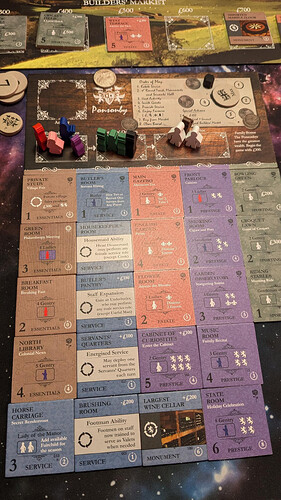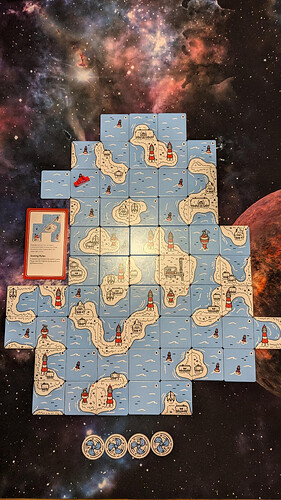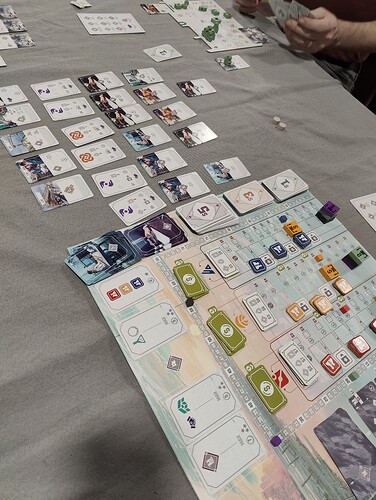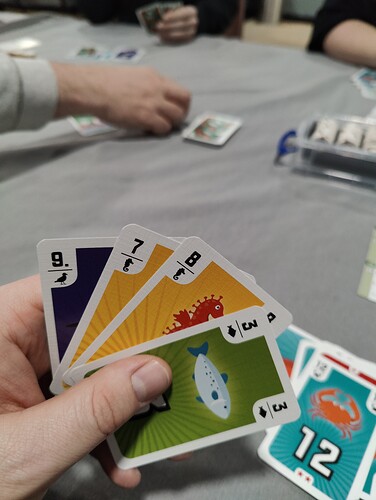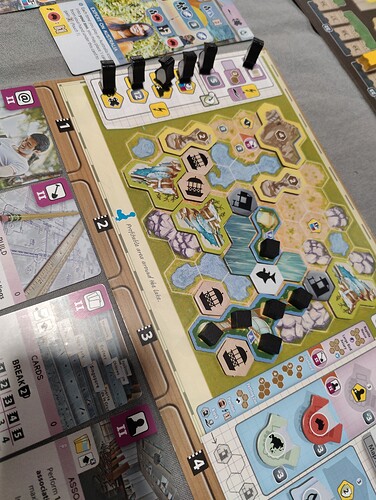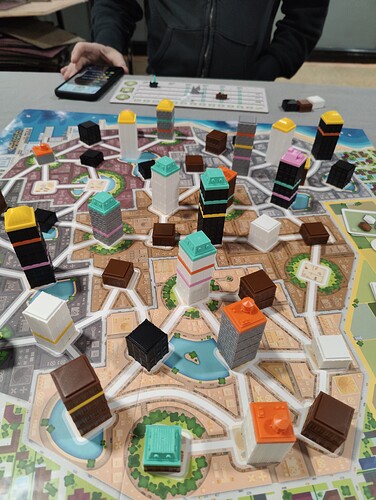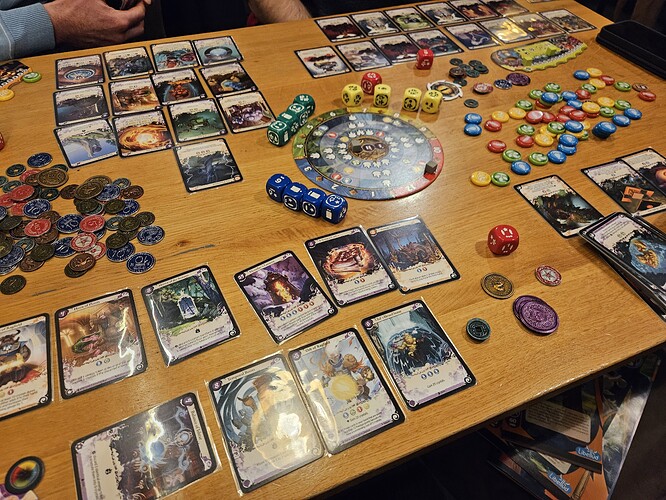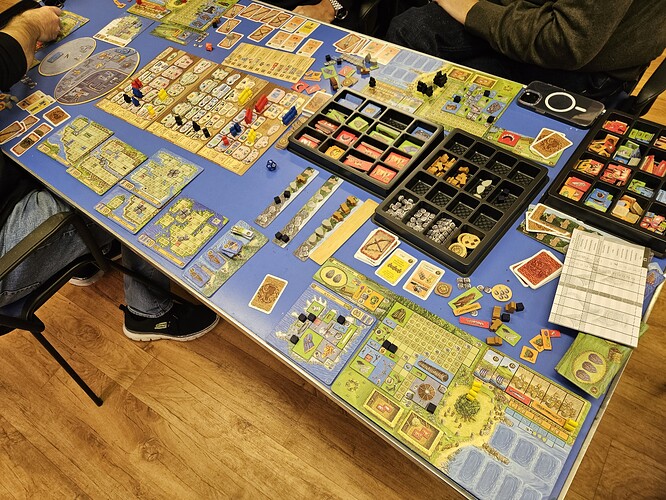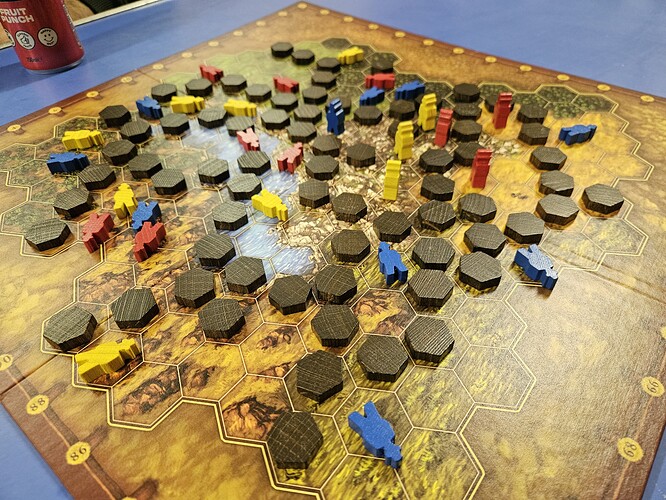Power Grid: Outpost - Fundamentally it is Power Grid, but changes enough to be different - a la Brass. Like OG PG, I don’t need this in my life so it is going to the sell pile.
The changes is that there’s now a labour market, instead of a resource market. Workers can be hired seasonally, but if you build shelters, then you get them permanently. The amount of workers in the game remain the same, so the more shelters are built, the higher labour cost goes for seasonal workers.
The map is different where the connection costs are randomly generated at the start of the game. And also, there are now these bonus cards which builds up your mini engine.
What is interesting is that you need to build power plant pieces on the board to make your power plants operational. So, if you only build 2, then you can only have 2 operational. So that means, you can go for density. Same with shelters.
However, this is all a moot point because of the late game convergence. You all want to reach a certain threshold, say, 17 cities. And the strongest power plant is a 7. So, you need at least 3 and have a 7-5-5 or 6-6-5. Only with 4 power plants on the board, you can be loose with power plant density
Like I said, I don’t need it. I’m proud to say that I have around 35 big box games in my core collection.
Le Havre - 4 players. Bloody good game.
Fields of Arle - 2 players. The comboing, the timing of the seasons, and the long term decisions with tools is just fun.
Liars Dice -
Tajuto - 3 players and it’s such a weird Knizia. At first glance, it seems that there’s no game here, but yeah, there is. The risk-taking with the bag draw is really good. And the interdependencies with the offerings, the Torii gates, and building all nicely binds together. The goals are also pretty clever.
Alas, I think the early game is too incremental and slow. But by midgame, juicy decisions can be had. Plus, the production choices are just poor. Also, there’s not much legs here, to be honest. The divergence of players decisions seems to go on the same arc. Meaning that players will be roughly playing the same way after several plays. There’s only so much decisions that a light Knizia can do, to be fair.
Also, in the pub we play, there are THREE colours that are so similar to each other. Abysmal.
Rebirth - 4 players. Another light Knizia. Good game. Not as slow as Tajuto. You draw a tile amd you play that tile. Despite the “1 tile hand”, there are choices to be made. Not a stunner, but it was a good light game.
Liar’s Dice - played with Playte edition again and the game went fast. Great filler
For Sale + Advisors - the addition of the advisors made For Sale a heavier game for a quick card game, probably increasing an additional 20 mins. But that 20 mins is worth it. Better strategic decisions for very low rules weight addition. Definitely elevates it. And the exp can be removed easily if you want the lightning fast base game
Fields of Arle - yes. TWICE! I went for flax strategy and didn’t really took off. Bad decisions were made as I haven’t played this for a while.
